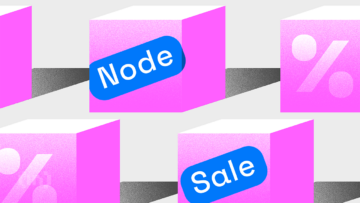Arbiscan operates as a comprehensive map charting every nook and corner of the Arbitrum network. This is true regardless of how you intend to use the blockchain explorer — whether you’re a developer coding decentralized applications, a trader who has to check on gas prices frequently, or an analyst piecing together the puzzle of the latest blockchain trends.
This comprehensive guide will help you make the most of this versatile tool regardless of your specific needs. Here’s what to know.
KEY TAKEAWAYS
• Arbiscan is a blockchain explorer designed specifically for the Arbitrum network.
• Arbiscan works much like an internet search engine but focuses exclusively on blockchain data.
• Arbiscan lets users explore and analyze detailed data on the network’s transactions, smart contracts, addresses, and blocks.
• It also offers analytics on network health, gas fees, and the overall performance of the Arbitrum layer-2 solution.
What is Arbiscan?
Arbiscan is a blockchain explorer tailored for the Arbitrum network. Arbitrum is a layer-2 scaling solution for Ethereum designed to increase transaction speed and efficiency while lowering costs.
Arbiscan follows a modus operandi similar to internet search engines, albeit for the blockchain. You can use it to sift through and inspect detailed information on the network’s transactions, smart contracts, addresses, and blocks. That makes it a handy tool for developers, traders, and enthusiasts to track transaction histories, verify contract deployments, or simply explore the network’s activity in real time.
Those are the basic functionality Arbiscan offers. Additionally, it also provides analytics on network health, gas fees, and the overall performance of the Arbitrum layer-2 solution. You can leverage this vast data pool to make informed decisions and ensure congestion-free and cost-effective transactions at any given time.
You are in for even more treats if you are a developer — that’s because Arbiscan can be your indispensable resource for debugging smart contracts. It does so by providing detailed insights into transaction executions and potential errors.
For the broader community, Arbiscan enhances transparency and trust within the Arbitrum ecosystem. This way, it adds to the decentralized principles that constitute the core of the blockchain community.
Did you know: Arbitrum is one of the most widely adopted layer-2 solutions on Ethereum, with over $2.6 billion in total value locked (TVL) in its DeFi protocols as of Aug. 21, 2024.
How does Arbiscan work?
Arbiscan operates by indexing and organizing the data from the Arbitrum blockchain. It taps into the Arbitrum network and continuously syncs with it to gather new transactions, blocks, and smart contracts as they are confirmed and added. This process involves several key mechanisms:
Node interaction
Arbiscan connects to Arbitrum nodes using JSON-RPC, a stateless, lightweight remote procedure call (RPC) protocol. It uses these connections to collect the latest blockchain data, including transactions, smart contract states, and block information.
Data indexing
Once the Arbitrum nodes fetch the data, Arbiscan indexes this information to make it searchable. This involves organizing data in a way that can be quickly retrieved based on various search queries, such as transaction hashes, addresses, or block numbers.
It also deploys a series of sophisticated database management systems to efficiently process the vast amount of incoming data.
Smart contract decoding
Arbiscan makes smart contract interactions understandable by decoding the data with the contract’s Application Binary Interface (ABI). This allows users to see the details of smart contract transactions in a human-readable format rather than just hexadecimal strings.
For instance, understanding decoded transaction data is especially important when transferring assets between Ethereum and Arbitrum using the Arbitrum Bridge.
Real-time monitoring and analytics
Arbiscan employs real-time monitoring tools to track network activity, gas prices, and contract interactions. This involves complex algorithms and data analysis techniques to provide insights into network health, transaction trends, and other relevant metrics.
User interface
The front end of Arbiscan presents the indexed blockchain data through a relatively intuitive web interface. Users can search for specific items, view detailed analytics, and explore blockchain activities without interacting directly with the Arbitrum network.
Arbiscan key features
Some of the key features of Arbican include:
- Transaction tracking: Users can search for and view details of specific transactions. This includes the sender, receiver, amount transferred, gas used, and transaction status.
- Block Explorer: It enables viewing block details such as block height, timestamp, transactions within the block, and the miner who validated the block.
- Smart contract interaction: This feature provides insights into smart contracts deployed on the Arbitrum network. For instance, you can use it to find contract creation details, contract code, and transactions interacting with the contract.
- Address watchlist: This is another handy little tool that allows users to monitor specific addresses and track their balances, transactions, and associated smart contracts.
- Network statistics: Displays real-time and historical data on network activity, including transaction volume, gas fees, and network congestion.
- Token tracker: Token tracker offers information on various tokens within the Arbitrum ecosystem. This includes ERC-20 and ERC-721 (NFT) tokens, their distribution, and transaction history.
- Decoded data: The explorer presents decoded transaction input data for easier interpretation of smart contract interactions.
- Gas tracker: Provides current and historical gas price data. You can use this feature to optimize transaction costs.
- Event logs: With event logs, you can search and filter through event logs emitted by smart contracts, which is crucial for understanding contract activity and state changes.
- Verified contracts: It shows smart contracts verified on Arbiscan, making their source code available for review and interaction details more transparent.
How to use Arbiscan
Arbiscan is a multi-utility toolkit. You can use it to:
- Read and analyze blocks
- Read and analyze transactions
- Analyze tokens
- Analyze addresses
- Scrap data using APIs
- Read smart contracts
- Track NFTs
- Read gas information
Let’s address how to operate each of these utilities.
How to read and analyze blocks
Arbiscan starts counting blocks from zero and then goes upward from there, i.e., zero, one, two, and so on. The number associated with the block is called its height.
Each block contains key data, such as the time it was mined, the gas used, and the number of transactions it holds.
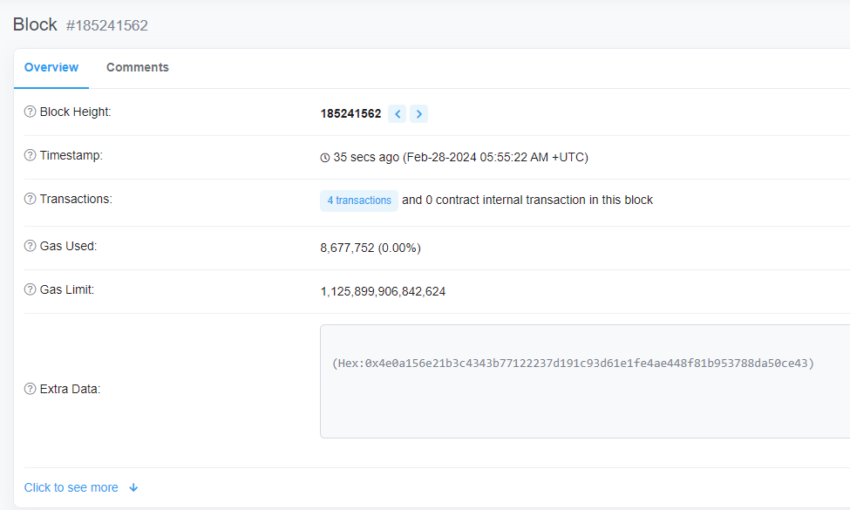
How to read and analyze transactions
Let’s say you have made a transaction and want to check its details and status. It’s simple with Arbiscan — all you need to do is enter the transaction ID on the search bar and hit enter.
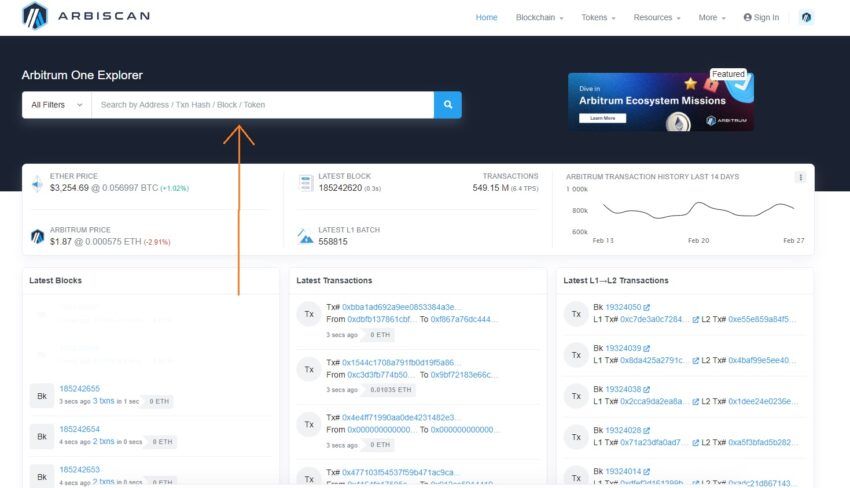
Arbiscan will instantly fetch you an overview of the corresponding transaction. As you can see in the screenshot below, the overview will include the following:
- A unique ID (it’s called a hash)
- Which block the transaction is from
- The corresponding time stamp,
- The source address
- The destination address
- The current status of the transaction
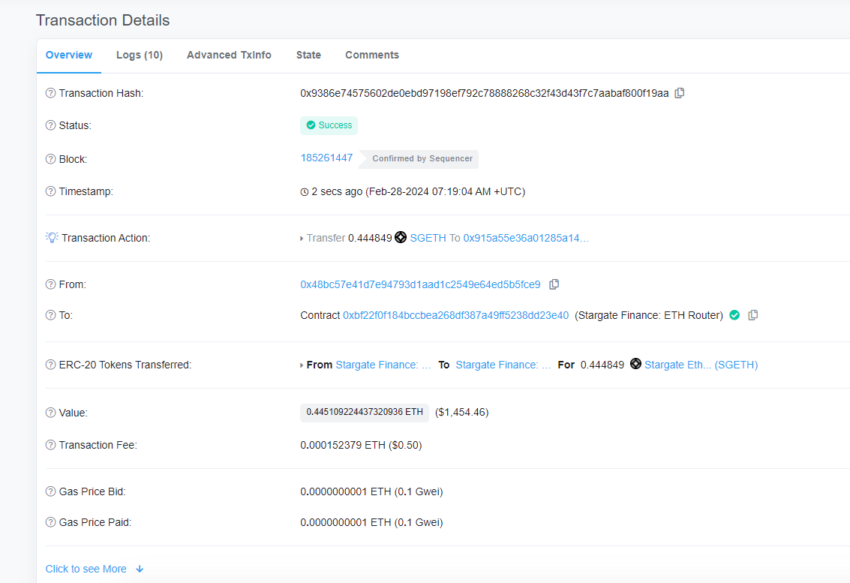
If the status says “pending,” that means the transaction is yet to be recorded by a block. A “successful” status means a block has already recorded the transaction.
Similarly, if the status reads “failed,” it means the transaction failed or was rejected — it could be due to a technical issue or gas fees.
How to view and analyze tokens
Like viewing transaction details, you can use the Arbiscan search bar to look up ERC-20, ERC-1155, and ERC-721 (NFTs) tokens. Alternatively, you can also go to the “Token” section of the website and view the top tokens.
The token overview section reveals the token’s type (e.g., ERC-20), current price, total supply, and holder activity. Meanwhile, the profile summary will fetch details such as the contract address, project website, and social media links.
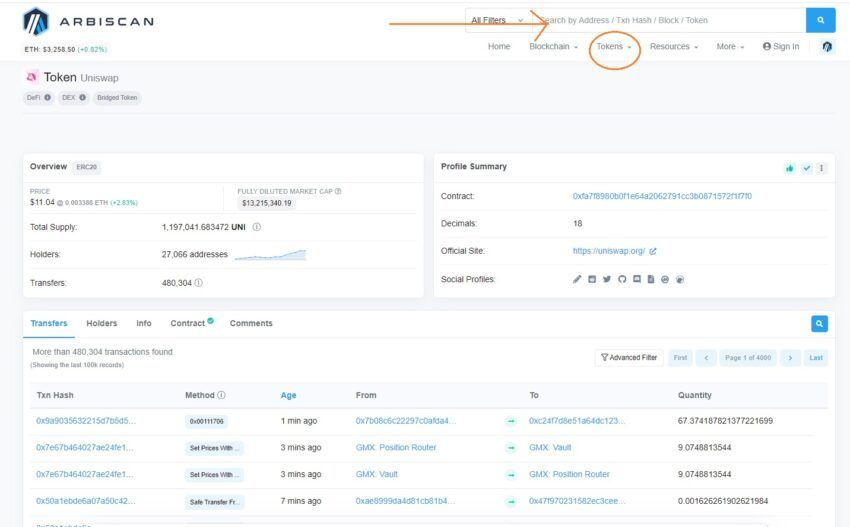
If you want to dig further, the same page fetches additional information like transfers, holder distribution, exchange listings, and even the inner workings of the smart contract itself — all accessible further down the page.
How to analyze addresses
Another perk of using Arbiscan is that you can look up individual addresses using the search bar. It could be a wallet address or even a smart contract — you just have to enter the address to get the associated details.
On the address page, you will see an overview of the address itself, its ETH balance, the total value of that balance, and the balance by token. Below, you will also see a recent list of incoming and outgoing transactions for that address.

How to scrap data using APIs
This is slightly tricky and requires some technical know-how. Ideally, you should start the process by referring to the Arbiscan API documentation. Here’s a quick overview of the step-by-step procedure you can follow:
- Sign up on Arbiscan and apply for an API key.
- Familiarize yourself with the available endpoints and data formats in the Arbiscan API documentation.
- Choose the appropriate endpoints for the data you need, such as transactions, account balances, or token details.
- Use a tool or programming library to make requests to the selected endpoints, including your API key for authorization.
- Parse the JSON formatted data returned from the API to extract the necessary information.
- Make sure to respect Arbiscan’s API rate limits and implement efficient querying and caching to optimize your data usage.
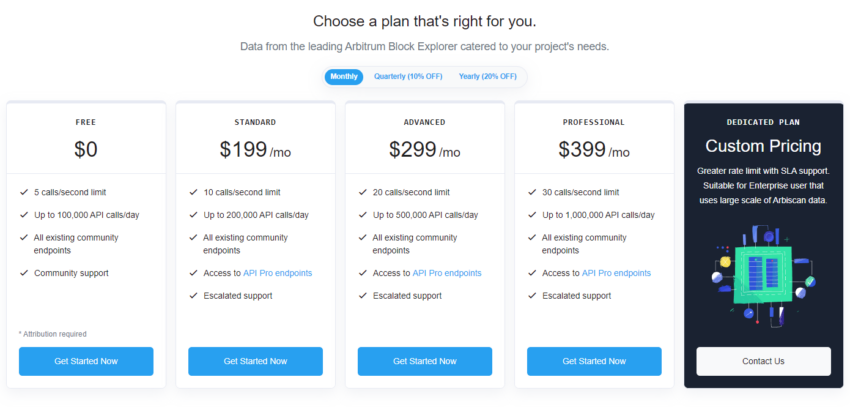
How to read smart contracts
Arbiscan lets you verify and read smart contracts. If you want to check whether or not a contract is verified, there are a couple of ways to go about it.
First, go to the Blockchain section of the website and select “Verified Contracts.” These contracts have undergone a thorough review process, ensuring their code matches the deployed bytecode, enhancing trust and security.
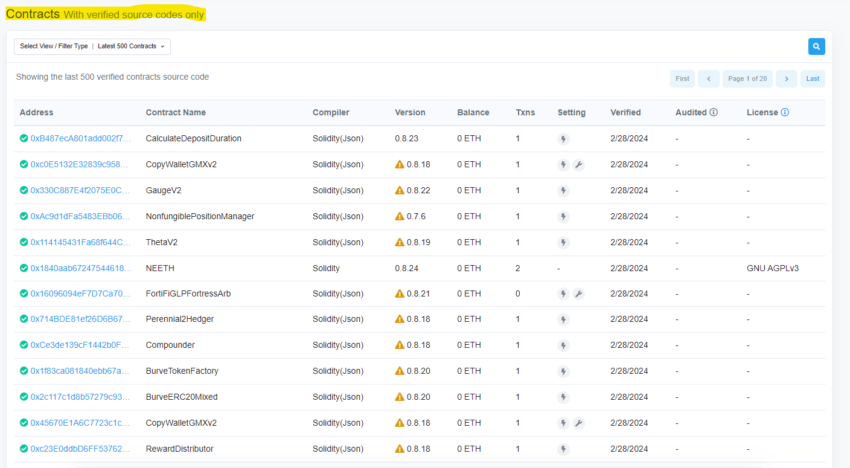
Alternatively, you could access an individual smart contract and check the “Contract > Code” segment to know whether or not the code has been verified. In fact, you can dig deeper and review the actual source code yourself.
How to track NFTs
Just head over to the “Tokens > ERC-721 top tokens” section of the website to see a list of top NFTs and information on their total number of transfers on both the 24-hour and seven-day scales.
Clicking on individual tokens will fetch further details, including token overviews and profile summaries.
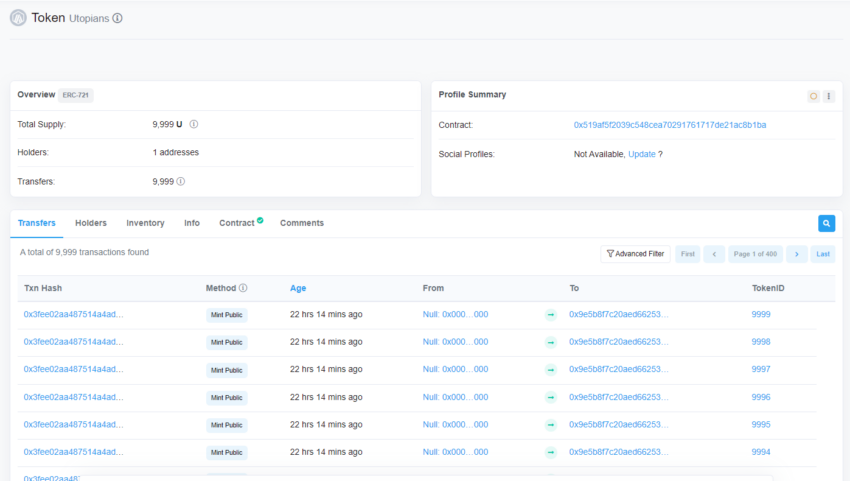
How to read gas info
Arbiscan gives you a glimpse into gas fees and various gas-related metrics when exploring a transaction. The key gas details you’ll find include:
- Gas price bid: This is the gas price proposed with the transaction.
- Gas price paid: It reflects the actual gas price settled upon.
- Ether price: Shows Ethereum’s closing price on the transaction day.
- Gas limit and usage: It indicates the maximum gas allocated and the actual amount used, noting that contracts typically require more gas than straightforward token exchanges.
- Gas fees: This includes the base fee, which is the network’s standard charge at the block’s time. Additionally, it covers the Max fee and max priority fee, which are the maximum amounts a user agrees to pay for the transaction and to incentivize the miner, respectively.
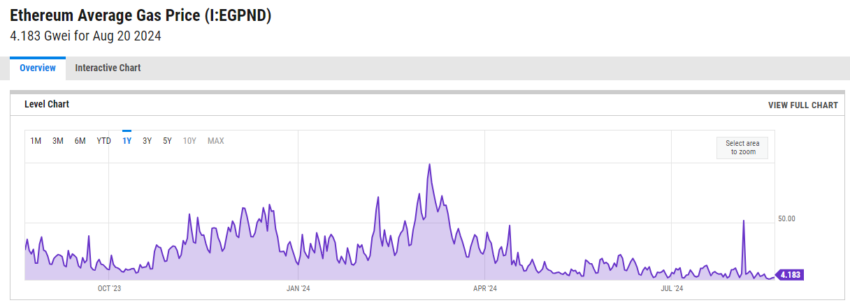
Top Arbiscan alternatives
While Arbiscan is pretty competent at what it does, it is not the only-of-its-kind tool. Most major blockchains and L2 scaling solutions have their own dedicated block explorers offering similar functionalities. Some of the most popular ones include:
- EtherScan: EtherScan is probably the most popular blockchain explorer and analytics platform for the Ethereum network. It comes with a wide range of tools that allow you to monitor transactions, wallet addresses, and smart contracts. You can use it to track and monitor all network activities in the Ethereum ecosystem. Using it is straightforward, regardless of your experience with such tools. Check out our EtherScan guide for more insight.
- BscScan: BscScan is the dedicated blockchain explorer for the Binance Smart Chain (BSC). Like EtherScan, it fetches detailed insights into transactions, addresses, smart contracts, and network activities, albeit in the BSC ecosystem. With features like a token tracker, validators list, and contract verification, BscScan offers a handy toolkit if you are a regular user of Binance Smart Chain.
- PolygonScan: As the name suggests, PolygonScan is a specialized blockchain explorer. It is designed to offer transparency and insights into transactions, smart contracts, and addresses on Polygon’s layer-2 scaling solution. You can use it to search and explore the Polygon blockchain, view transaction details, interact with smart contracts, and analyze token info, among other things.
Weighing the benefits and limitations of Arbiscan
Arbiscan does a neat job of closely monitoring all transactions, smart contracts, and blocks on Arbitrum. The only bone of contention for some might be its exclusive focus on the Arbitrum ecosystem. But then, Arbiscan is, by design, an exclusive block explorer on Arbitrum — so it’s more like a strength than a folly.
Don’t forget that Arbiscan can also be an indispensable tool in your trading inventory if you are into data-driven decision-making. It charts real-time asset transfers and price movements across Arbitrum, giving you a clearer picture of market sentiment and network value flows.
Frequently asked questions
What is Arbiscan?
What is Arbitrum used for?
What is the block time for Arbitrum?
What are some Arbiscan alternatives?
What are Arbiscan’s primary features?
Disclaimer
In line with the Trust Project guidelines, the educational content on this website is offered in good faith and for general information purposes only. BeInCrypto prioritizes providing high-quality information, taking the time to research and create informative content for readers. While partners may reward the company with commissions for placements in articles, these commissions do not influence the unbiased, honest, and helpful content creation process. Any action taken by the reader based on this information is strictly at their own risk. Please note that our Terms and Conditions, Privacy Policy, and Disclaimers have been updated.




